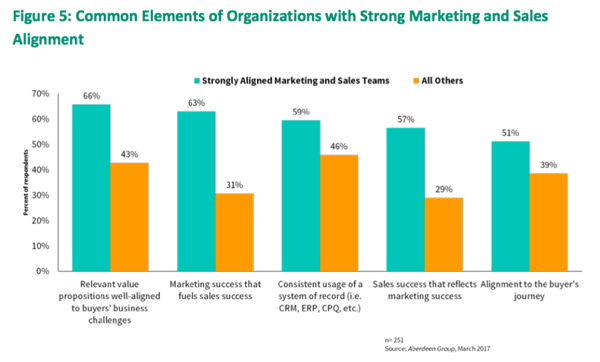
Written By: Jeff Davis | Apr 16, 2018 12:00:00 AM
Jeff Davis is founder of The Sales + Marketing Alignment Summit, an executive peer-to-peer event series that develops actionable insights for companies struggling to achieve alignment that drives revenue. He is a keynote speaker at the 2018 TMSA Logistics Marketing & Sales Conference.
an executive peer-to-peer event series that develops actionable insights for companies struggling to achieve alignment that drives revenue. He is a keynote speaker at the 2018 TMSA Logistics Marketing & Sales Conference.
I think that most B2B leaders across industries would agree that Sales and Marketing Alignment is a necessary transformation that needs to happen. This is a historical relationship that has suffered for many reasons. As more and more focus and information starts to be generated about this alignment, my fear is that executives will lose sight of what is important - the shiny object syndrome. Thus, it is my intent to help drive for clarity while using the great research and insights we get from industry experts. We can have all the greatest insights, research, and thought-leadership, however, if we can't make it actionable for today's leaders then it becomes useless. We need to focus on creating a framework for success.
Organizations without strong marketing and sales alignment are 2.1x as likely to see both marketing and sales teams struggling. --Aberdeen Group, 2017
With that thought in mind, I would like to ask the question - "What are the common elements of organizations that are getting Sales and Marketing Alignment right?". The reason this question is so important is that we need to focus on those common traits that lead to success. This will allow executives to set business strategies that address these "universal" themes that have a higher likelihood of leading us to success than getting wrapped around specific tactics that may or may not be applicable for each individual business. When we are able to focus on indicators of success that are agnostic to our business we can then tailor strategies that uniquely address our business and then choose the "sexy" tactics that are aligned with those strategies. It takes a lot of discipline, however, for an organization to do this. It is much easier to give a knee-jerk response to the CEO or board by saying "we are going to add X tactic this quarter to drive revenue" when we all know that is not the root cause of the problem.
Common Elements of Successful Alignment
Aberdeen Group published a recent study titled "Foster Marketing and Sales Alignment, or Forget About Hitting Your Goals" that helps us identify some common elements of companies that are getting this alignment issue right. Keep in mind that Aberdeen uses a maturity class framework based on 5 key performance metrics to determine how aligned organizations are around sales and marketing.
5 key performance metrics to evaluate sales and marketing alignment of an organization (Aberdeen):

By looking at Figure 5, you will find that the 2nd and 4th element have the highest difference. This is a clear indicator that there is a symbiotic nature to creating success on both sides of the fence. For instance, Marketing is able to be more successful with MQLs, lead gen, etc because they are communicating with Sales and better understand what they should be focusing on. In turn, Sales is more likely to be vested in trying to convert those leads into sales and they will have a higher likelihood of actually closing business because Marketing has already taken the time to "hear" what Sales thinks will lead to successful customers. What I also found notable was that sales and marketing teams are 53% more likely to ensure they are using a relevant value proposition compared to other less aligned organizations. This speaks to the importance of the organization telling consistent, compelling stories to potential buyers.
So, while the top two common elements with the biggest difference as compared to less aligned organizations (marketing success that fuels sales success and vice versa) may be a bit more challenging to execute immediately, the other three (1. relevant value proposition, 2. consistent usage of CRM and related tools and 3. alignment to buyer's journey) may be a bit more tangible as company executives look at starting the journey to better alignment. I think these common elements can start to be woven into the fabric of the business without a complete overhaul or fundamental change in strategy. This will help face less resistance from both groups.
Focus on Frameworks
As companies agree to take on the task of aligning their sales and marketing organizations, I think it will be very important for leaders to step back and really think about what are successful organizations already doing from a strategic standpoint and try to modify their organizations to mirror those traits. We must continue to push for relevant frameworks and best practices that help organizations customize what Alignment means for them.
Interested in learning more?
Join TMSA and visit the Members Only Section for more valuable resources and whitepapers.
And check out the TMSA Blog for more related articles!
Tags: Strategy